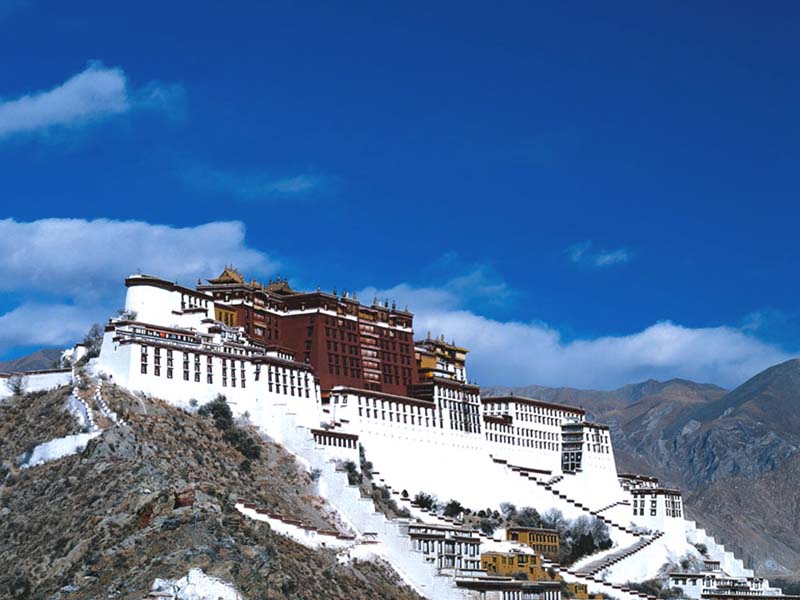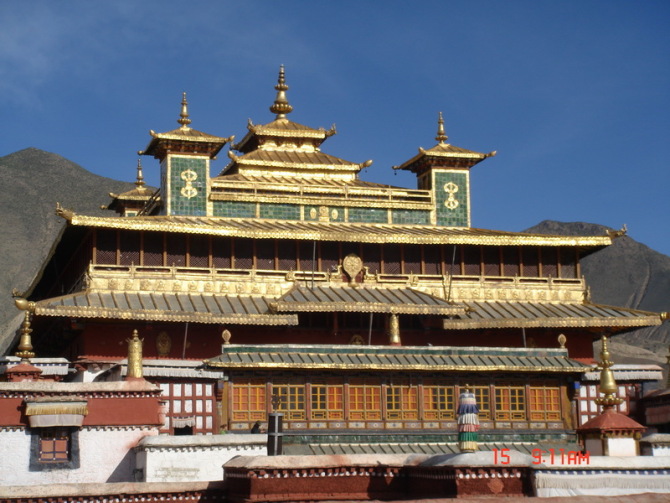Tour in Tibet

Lhasa is rightly one of the most featured and dreamt-about cities in the world. This is not only because of its remoteness, its high altitude at 3,650 meters (11,975 feet) means limited accessibility, but also because of its impressive heritage of over a thousand years of cultural and spiritual history that has helped to create the romantic and mysterious tibetan religion.


Day 01Arrival in lhasa
Our guide will meet you outside the baggage claim area at lhasa airport, where the altitude is 3,650 meters above sea level. Check in at the hotel. Dinner is served at your hotel.(D)
Descriptions:
Tibet -
in Tibet, there are many great rivers such as Jinsha River, Lancang
River, Nu River and Yarlong Tsangpo River. Among them, the Yarlong
Tsangpo River is the largest one which rises in the northern slope of
Himalayas, and finally arrives in India where the locals call it
Brahmaputra River. The spectacular scenery of it attracts many
photographers to take pictures as souvenirs.
Day 02Lhasa
Visit the magnificent Potala Palace. After a western-style lunch, visit the Sera Monastery, the Norbulingka park and a Tibetan family. (B+L+D)
descriptions:
Potala Palace -
the Potala Palace is a must to see when you come to Lhasa. It has a
long history which dates back to Tang dynasty when the king Songtsen
Gampo and the princess Wencheng were yoked in marriage. It is composed
of the white palace which is located at two ends and the red palace
which is in the center. The white palace is the sitting room of Dalai
Lamas where there are a variety of halls and corridors, delicate
buddhist paintings and decorations. The red palace is the holy place to
worship the buddha statues. The colorful frescoes and valuable treasures
make it splendid in gold and green.
Sera Monastery
- Sera Monastery is one of the renowned Tibetan buddhist temples of the
Gelug Sect (Yellow Hat). Built in 1419 in Ming dynasty (1368 - 1644),
it is composed of a coque hall, three zhacangs (college) and twenty-nine
kamcuns (dormitory). It keeps over 10,000 statues of Vajra, most of
which were built in the local factories or workshops. Visitors can also
find a number of bronze buddha statues from India or the inland regions.
Norbulingka Park
- as one of the national cultural relic protection units of China, the
Norbulingka park is reputed as the largest and the most beautiful
artificial garden in Tibet. Located in the western suburb of Lhasa city,
the park was built under the reign of the seventh Dalai Lama in the
1740s. After many years of reconstruction, it now covers an area of
approximately 89 acres and has 374 rooms. It is composed of three major
areas, the palace area, the area in front of the palaces and the area of
woods.


Day 03Lhasa
Visit the Drepung Monastery. After having a western-style lunch, go ahead to visit the Jokhang temple, the thriving bazaar of the Barkhor street, the Tibetan traditional hospital and the carpet factory. Dinner is served at your hotel.(B+L+D)
Descriptions:
Jokhang Temple -
the well-known Jokhang Temple was built after the princess Wencheng of
the Tang dynasty entering Tibet. After the restoration and
reconstruction through many dynasties, it has become a huge complex with
the architectural styles of the Tang dynasty, India and Nepal.
Barkhor street
- lying in the central area of Lhasa city, the Barkhor street was
regarded as the 'Holy Road' in Tibetan people's heart. Actually, it is
composed of four branch streets, namely the Barkhor east street, the
Barkhor west street, the Barkhor south street and the Barkhor north
street. With a total length of over 1,000 meters (about 1,093 yards),
the street network includes 35 lanes. In addition, there are more than
120 handicraft stores and over 200 stalls selling tibetan specialties.
Day 04Lhasa - Gyangtse
Drive to Gyangtse. Stop off at the Yamdrok Yumtso Lake. Transfer to the hotel. Visit the Palkhor Monastery and Gyangtse old street. Dinner is served at your hotel.(B+L+D)
Descriptions:
Palkhor Monastery
- the Palkhor Monastery is famous for its murals. They are expressed in
a variety of themes, including the stories about buddhas and the
theories related to the esoteric and exoteric buddhism. They have
distinctive characters in drawing methods compared to those in other
temples in Tibet.
Day 05Gyangtse - Shigatse
Drive to Shigatse and transfer to the hotel. Visit the Tashilhunpo Monastery and the new palace of Panchen.
Day 06Shigatse - Lhasa
Drive back to Lhasa and transfer to the hotel. Dinner is served at your hotel.(B+L+D)
Day 07Departure from Lhasa
Visit the Tibet Museum, time permitting. Then we will transfer you to the airport for the return flight. Have a pleasant trip home!(B)
Descriptions:
Tibet Museum
- the Tibet museum is the first museum in Tibet which is endowed with
modern facilities. To satisfy the need of visitors from the world, the
exhibits in the museum are introduced in Chinese, English, Tibetan and
Japanese. The whole construction work integrates the Han with Tibetan
architectural characters.
